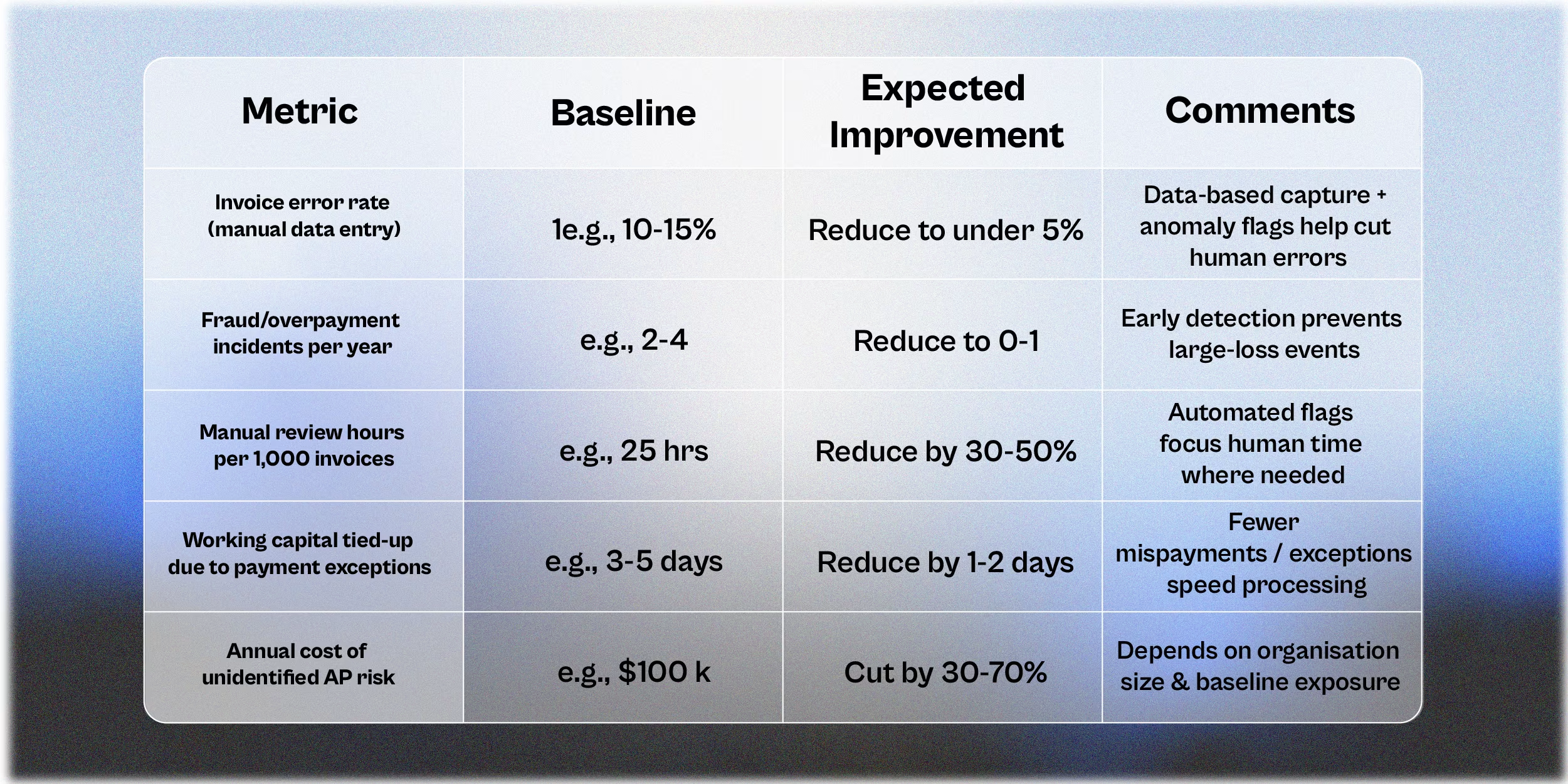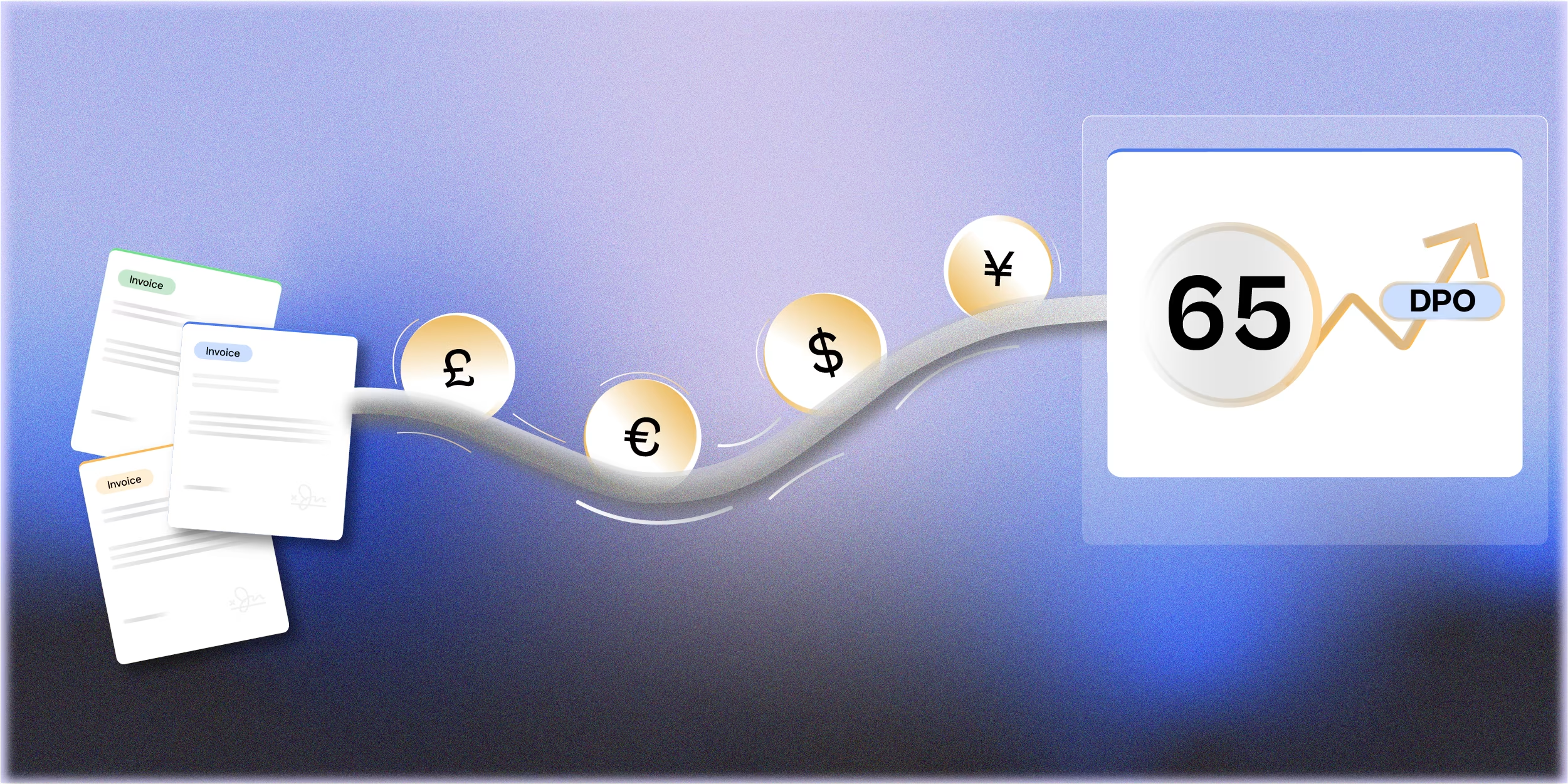For mid‑market companies, the volume and complexity of invoices and payments are growing fast. But that growth also brings elevated risk: whether from fraudulent schemes or simple manual errors. By implementing anomaly detection within the payables cycle, finance teams can proactively monitor unusual transactions, flag them for review, and strengthen control around cash outflows.
The problem: errors and fraud in accounts payable
The accounts payable (AP) function remains a major vulnerability point across finance operations. Manual data‑entry, disconnected systems, weak vendor onboarding and ad‑hoc workflows all contribute to elevated risk. For example:
- A recent study found that manual AP documents had errors in 88% of processed cases due to human input mistakes.
- Fraudsters target AP departments through fake invoices, vendor impersonation and compromised vendor details. These schemes often go unnoticed until after payment
- Traditional rule‑based approaches (e.g., “flag duplicates if vendor field repeats”) struggle when fraud tactics evolve or data volumes scale.
As a result, finance teams face dual threats: overpayments (due to error) and unauthorised payments (due to fraud). Both erode working capital, risk audit findings and damage vendor relationships.
What is anomaly detection in payables?
Anomaly detection refers to identifying data points, transactions or patterns that deviate significantly from what’s considered “normal” behaviour in a dataset.
Within AP, anomaly detection might mean:
- A vendor invoice amount that falls well outside its historical range for that vendor or service type.
- A vendor bank account change that hasn’t been processed via change‑request controls.
- A series of invoices from a new vendor that accelerate rapidly compared to typical volume.
- An invoice that arrives electronically from a domain not previously used by the vendor.
By embedding anomaly detection within AP workflows, finance teams can move from reacting (after a problem is discovered) to pre‑empting.
Data‑backed impact points
- According to research, anomaly detection across financial transactions can enable earlier detection of fraud, improve operational efficiency and reduce manual review burdens.
- A recent study notes “real‑time dashboards: instantly detect anomalies and delays” as a key control in AP fraud prevention for companies.
- In a broader survey on financial anomaly detection techniques, unsupervised machine learning models were cited for their ability to detect unknown or evolving kinds of anomalies which is critical given fraud’s evolving nature.
Strategic implications for finance leaders
CFOs and AP leaders should treat anomaly detection not as a nice‑to‑have, but as a component of risk management and cash‑flow protection.
Key strategic steps:
- Baseline your AP process. Map invoice‑to‑payment flows, identify weak controls (vendor onboarding, invoice review, approval routing).
- Prioritise data readiness. Clean vendor master, ensure invoice metadata is digitised (e.g., invoice dates, amounts, vendor history). Poor data quality undermines anomaly detection.
- Select the right technology. Tools offering machine‑learning or statistical detection (rather than just rule‑based) will adapt better to new fraud schemes.
- Embed in workflow, not just IT. Anomaly alerts must connect into human approvals: flagged transactions routed to reviewers, with audit trail and resolution tracking.
- Track KPIs. Monitor metrics such as: % of invoices flagged, % of flagged invoices validated as risk, average time to resolution, cost of fraud or overpayment avoided.
Ensure change management & governance. New alerts = new behaviours. Define roles, maintain segregation of duties and train staff to act on anomalies.
ROI Benchmarks
Below is a sample benchmark table for AP automation with anomaly detection. Actual results will vary based on baseline performance and transaction volume.

For companies operating in North America, embedding anomaly detection in the AP process is no longer optional, it’s essential. The combination of rising invoice volumes, remote work complexities and evolving fraud tactics demands a proactive stance. Finance teams that adopt anomaly detection rigourously gain stronger control over cash outflows, better risk protection and operational agility. As you evaluate your AP transformation strategy, ensure modern detection capability is part of the blueprint.
Book a demo to learn how Finofo embeds fraud prevention and anomaly alerts directly into your AP workflow.







